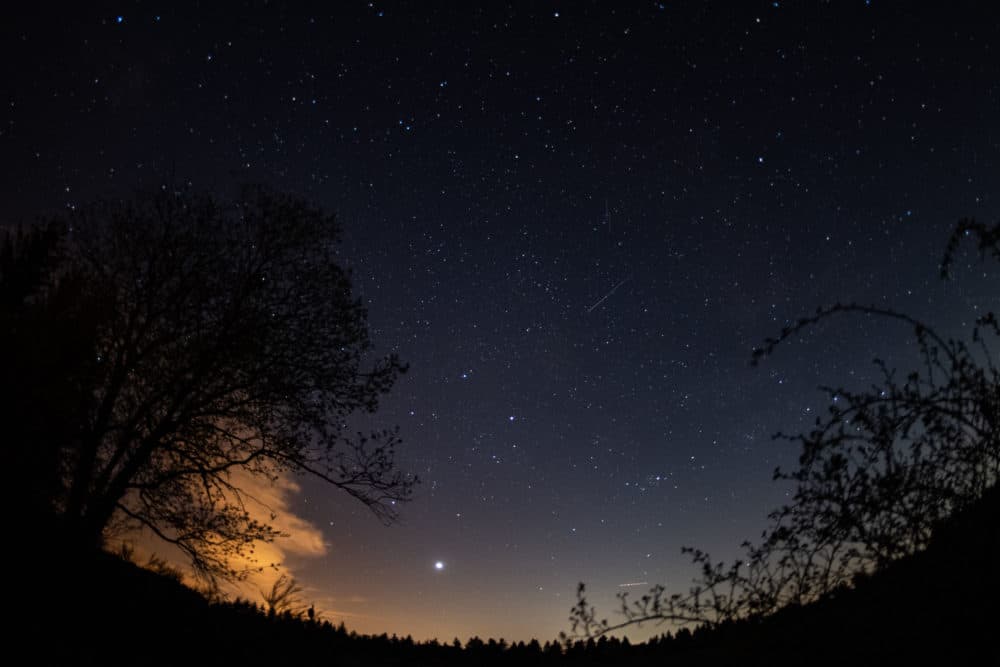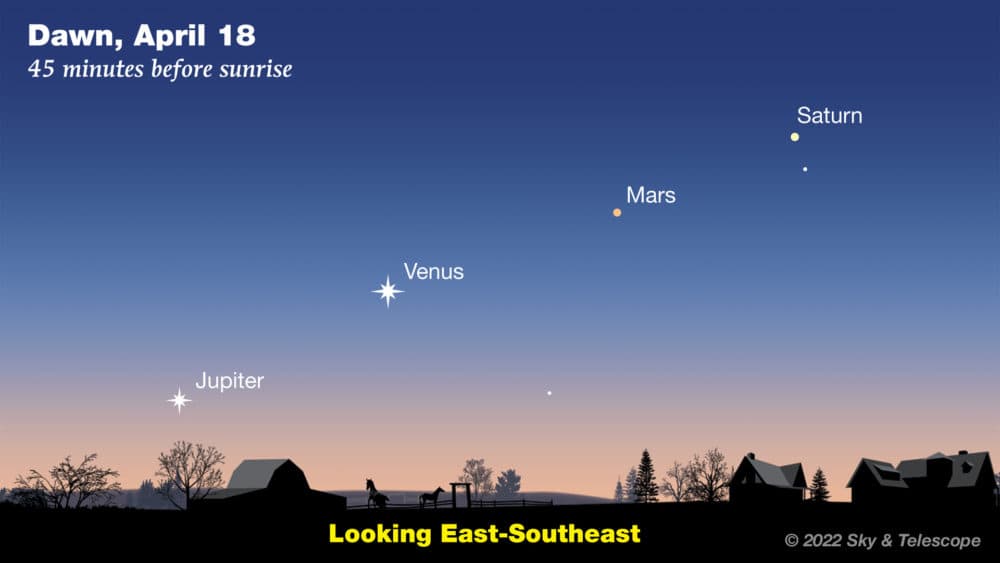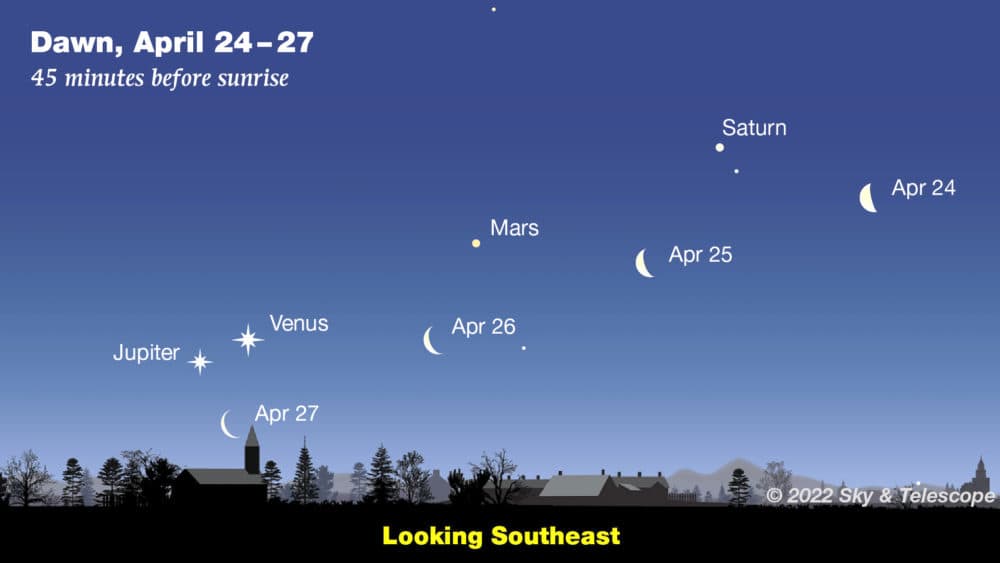Advertisement
Your guide to stars and planets to scan the skies for in April
Resume
There are some exciting celestial events happening in our solar system over the next two weeks, and Bostonians interested in a little "eyeball astronomy" will have a front-row seat — no telescope or special expertise required.
The list includes a "conjunction" — a gathering of planets — on Monday, April 18. That morning, you'll be able to look up and see four bright lights, said Kelly Beatty, executive editor of Cambridge-based Sky & Telescope magazine.
"Those are all planets in a diagonal row: Jupiter, Venus, Mars and Saturn," Beatty said. "Over the next few days, you can watch these planets shuffle a little and literally see planets moving in their orbits."

You'll also want to circle April 29 on your calendar, Beatty said, for an event involving Mercury.
"On that date, Mercury will be parked right next to a beautiful little star cluster called the Pleiades, or 'the Seven Sisters' — or in Japanese, it's called Subaru. And through a pair of binoculars, it'll look just fantastic," he said.
Jupiter and Venus also take center stage toward the end of the month. The two planets will be cozying up to each other day by day, with ideal viewing set for April 30.
At that point, the planets will be less than half a degree apart.
"To put that in context, if you stretch out your arm and hold up your pinky finger, the tip of that finger will cover them both — easily. They're less than the diameter of a full moon apart," Beatty said. "And these are the two brightest planets. So you will wonder what's going on. 'Is this like, a plane landing at Logan? Is it a supernova? What is this?' Because it will not look normal."

Then there's the Lyrid meteor shower, which happens every April as Earth travels through the dusty remnants of a comet.
"These little bits strike our atmosphere at about 30 miles a second. That's really fast, and they create very brief flashes that we call meteors," Beatty said, adding this year's optimal Lyrid viewing conditions will be just after dusk Friday, April 21, and Saturday, April 22.
"You want to try to get to a dark spot, away from street lights — maybe go to a soccer field or a softball field nearby. Because the darker your sky, the more meteors you will see," Beatty said. "You'll see one maybe every five or 10 minutes, and you just need to look in the part of the sky that looks darkest to you, no particular direction."
All these events show how our solar system is ticking along "like a giant clock," Beatty said.
"These patterns that we see, they are breathtaking and startling to the eye," he said. "And yet they occur over and over again ... on a timescale of centuries."
Beatty also shared a couple of his top Greater Boston stargazing locations. Here's a list to get you started:
- Great Brook Farm State Park (Carlisle)
- Robbins Farm Park (Arlington)
- Duxbury Beach (Duxbury)
This article was originally published on April 14, 2022.
This segment aired on April 14, 2022.


